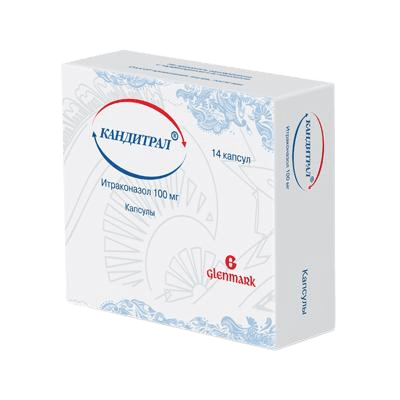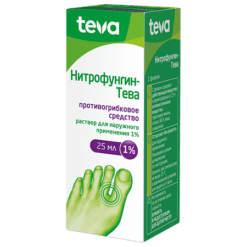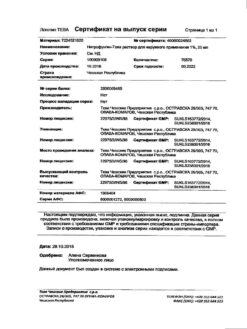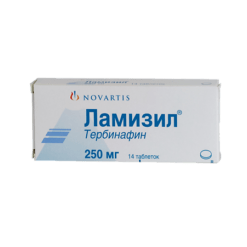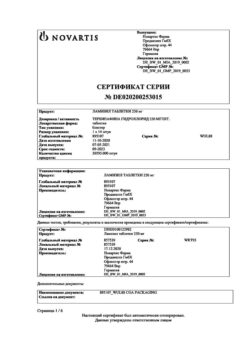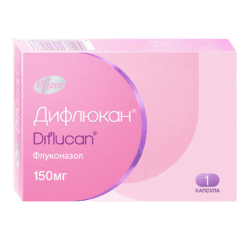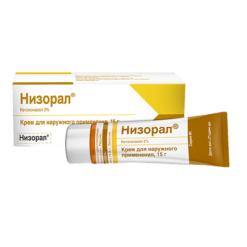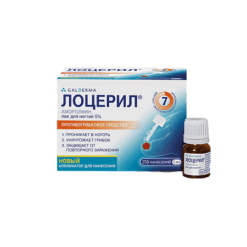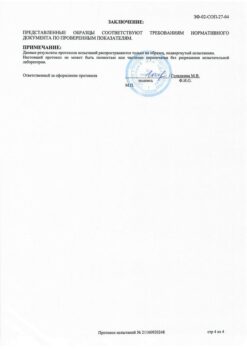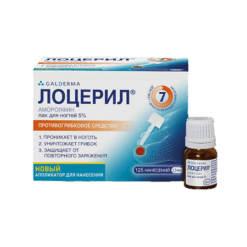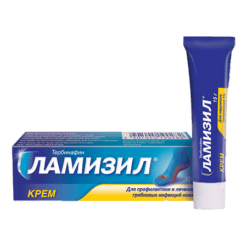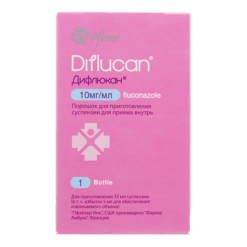No products in the cart.
Canditral, 100 mg capsules 14 pcs
€1.00
Out of stock
(E-mail when Stock is available)
Description
CANDITRAL is a synthetic broad-spectrum antifungal agent, a triazole derivative. It inhibits the synthesis of ergosterol which is an important component of the cell membrane of fungi.
Itraconazole is active against dermatophytes (Trichophyton spp., Microsporum spp., Epidermophyton floccosum); yeast-like fungi and yeasts (Cryptococcus neoformans, Pityrosporum spp., Trichosporon spp., Geotrichum spp., Candida spp, including Candida albicans, Candida glabrata and Candida krusei); Aspergillus spp, Histoplasma spp, Paracoccidioides brasiliensis, Sporothrix schenckii, Fonsecaea spp, Cladosporium spp, Blastomyces dermatitidis, Pseudallescheria boydii, Penicillium marneffei and other yeast and mold fungi.
Pharmacokinetics
absorption
When administered orally, maximum bioavailability of itraconazole is observed when capsules are taken immediately after a meal.
The time to reach Cmax is 3-4 hours.
Distribution
The equilibrium plasma concentration of itraconazole in 3-4 hours after taking the drug is 0.4 µg/mL (when taking 100 mg once daily), 1.1 µg/mL (when taking 200 mg once daily), and 2.0 µg/mL (when taking 200 mg twice daily).
In long-term administration the equilibrium concentration is reached within 1-2 weeks. The binding to plasma proteins is 99.8%.
Itraconazole penetrates well and distributes well in tissues and organs. Concentration of the drug in lungs, kidneys, liver, spleen, stomach, bones, skeletal muscles is 2-3 times higher than its concentration in plasma. Accumulation of itraconazole in keratinous tissues, especially in skin, is 4 times higher than its concentration in plasma, and excretion rate depends on epidermis regeneration.
In contrast to concentrations in plasma, which are undetectable as early as 7 days after cessation of treatment, therapeutic concentrations of itraconazole in the skin are maintained for 2-4 weeks after cessation of 4 weeks of treatment; in the vaginal mucosa – for 2 days after the end of 3-day treatment at a dose of 200 mg per day and 3 days after the end of one-day treatment at a dose of 200 mg twice a day.
The therapeutic concentration of the drug in nail keratin is determined 1 week after the start of treatment and is maintained for 6 months after completion of a 3-month course of therapy. Itraconazole is also determined in the secretion of sebaceous and sweat glands.
Metabolism
Metabolized by the liver with the formation of active metabolites, one of which – hydroxyitraconazole – has comparable with itraconazole antifungal effect in vitro.
Elimation
The plasma excretion is biphasic with a final half-life of 24 to 36 hours.
Fecal excretion is 3 to 18% of the dose. Renal excretion is less than 0.03% of the dose.
Approximately 35% of the dose is excreted as metabolites in the urine within 1 week.
Pharmacokinetics in special clinical cases
The bioavailability of itraconazole may be reduced in patients with renal impairment and in some patients with impaired immunity (e.g., in AIDS, after organ transplantation or in cases of neutropenia).
In patients with cirrhosis the bioavailability of itraconazole is reduced and the half-life is prolonged.
Indications
Indications
Active ingredient
Active ingredient
Composition
Composition
1 capsule contains:
The active ingredient:
Itraconazole
Associates:
Hypromellose (hydroxypropyl methylcellulose E5)
Eudragit E-100 (copolymer of methyl methacrylate, dimethylaminoethyl methacrylate and butyl methacrylate)
Sugarose
Capsule composition:
Gelatin
Purified water
Methylparahydroxybenzoate
Methylparahydroxybenzoate
Propylparahydroxybenzoate
Sodium lauryl sulfate
How to take, the dosage
How to take, the dosage
Overly, after meals.
Vulvovaginal candidiasis – 200 mg 2 times a day or 200 mg once a day.
Tuberculous lichen – 200 mg once a day.
Smooth skin dermatomycosis – 200 mg once daily or 100 mg once daily.
Injuries to highlykeratinized areas of the skin, such as the hands and feet – 200 mg 2 times a day or 100 mg once a day.
Oral candidiasis – 100 mg once daily.
Fungal keratitis – 200 mg once daily.
The duration of treatment can be corrected taking into account the positive dynamics of the clinical picture.
The bioavailability of the drug when taken orally may be reduced in some patients with impaired immunity, such as patients with neutropenia, AIDS patients or patients with organ transplants. In these cases, doubling the dose may be necessary.
Interaction
Interaction
Medications affecting absorption of itraconazole:
Medications that reduce acidity of gastric juice reduce absorption of itraconazole.
Drugs affecting the metabolism of itraconazole:
Itraconazole is mainly cleaved by the enzyme CYP3A4. In concomitant use with rifampicin, rifabutin, phenytoin, carbamazepine, isoniazid, which are potent inducers of CYP3A4 enzyme, bioavailability of itraconazole and hydroxyitraconazole is significantly reduced, which leads to a significant reduction of the effectiveness of the drug.
The concomitant use of Canditral with these drugs, which are potential inducers of hepatic enzymes, is not recommended.
Powerful CYP3A4 enzyme inhibitors, such as ritonavir, indinavir, clarithromycin and erythromycin, may increase the bioavailability of itraconazole.
The effect of itraconazole on the metabolism of other drugs:
Itraconazole may inhibit the metabolism of drugs cleaved by the CYP3A4 enzyme. This may increase or prolong their effects, including side effects.
After discontinuation of treatment with Canditral, the plasma concentration of Itraconazole decreases gradually, depending on the dose and duration of treatment (see section Pharmacokinetics). This should be taken into account when discussing the inhibitory effect of itraconazole on concomitant drugs.
Examples of such medications are:
Drugs that should not be prescribed concomitantly with Canditral:
Drugs concomitantly prescribed should be monitored for plasma concentrations, effects, side effects. If necessary, the dose of these drugs should be reduced:
Special Instructions
Special Instructions
Women of childbearing age taking Canditral should use adequate contraception throughout the course of treatment until the first menstrual period after completion.
In an IV study of Itraconazole, a transient asymptomatic decrease in left ventricular ejection fraction was observed, which normalized before the next infusion of the drug.
Itraconazole has been found to have a negative inotropic effect. There have been reported cases of heart failure associated with the administration of Canditral.
Canditral should not be taken in patients with chronic heart failure or with a history of this disease unless the possible benefit significantly exceeds the potential risk.
Calcium channel blockers may produce a negative inotropic effect, which may increase the similar effect of itraconazole; itraconazole may decrease metabolism of calcium channel blockers. Caution should be exercised when concomitant use of itraconazole and calcium channel blockers.
In patients with renal insufficiency, the bioavailability of itraconazole may be reduced, which may require dose adjustment.
In patients with decreased gastric acidity, absorption of itraconazole is impaired. Patients taking antacids (e.g., aluminum hydroxide) are recommended to use them not earlier than 2 hours after taking Canditral.
Patients with achlorhydria or who use H2-histamine blockers or proton pump inhibitors are recommended to take Canditral capsules with acidic beverages.
In very rare cases, severe toxic liver damage, including cases of acute hepatic failure with fatal outcome, has developed when using Canditral. This has occurred in patients who already had liver disease, as well as in patients who received other drugs with hepatotoxic effects. Several such cases occurred in the first month of therapy, and some in the first week of treatment. In this regard it is recommended to monitor regularly the liver function in patients receiving itraconazole therapy.
Treatment should be discontinued if neuropathy occurs, which may be associated with intake of Canditral capsules.
There are no data on cross-sensitivity to itraconazole and other azole antifungal drugs. Canditral capsules should be used with caution in patients with hypersensitivity to other azoles.
Patients with compromised immunity (AIDS, after organ transplantation, neutropenia) may require increasing the dose of Canditral.
Pediatric use
Canditral should not be prescribed in children unless the expected benefit exceeds the possible risk.
Effects on ability to drive and operate machinery have not been observed.
Contraindications
Contraindications
With caution: childhood age, severe heart failure, liver disease (including those accompanied by liver failure), chronic renal failure.
Side effects
Side effects
Gastrointestinal tract disorders: dyspepsia, nausea, vomiting, decreased appetite, abdominal pain, diarrhea, constipation.
Hepato-biliary system disorders: reversible increase in “liver” transaminase activity, hepatitis; very rare – severe toxic liver damage, including acute liver failure with lethal outcome.
Nervous system disorders:headache, dizziness, peripheral neuropathy.
Allergic reactions:cutaneous rash, pruritus, urticaria, angioedema, rarely – erythema multiforme exudative (Stevens-Johnson syndrome).
Skin side:alopecia, photosensitivity
Others: menstrual irregularities, hypokalemia, edema syndrome, congestive heart failure and pulmonary edema, hypercreatinemia, dark coloring of urine.
Similarities
Similarities
Additional information
| Weight | 0.020 kg |
|---|---|
| Shelf life | 2.5 years |
| Conditions of storage | In a dry, light-protected place at a temperature not exceeding 25 °C |
| Manufacturer | Glenmark Pharmaceuticals Ltd, India |
| Medication form | capsules |
| Brand | Glenmark Pharmaceuticals Ltd |
Related products
Buy Canditral, 100 mg capsules 14 pcs with delivery to USA, UK, Europe and over 120 other countries.

